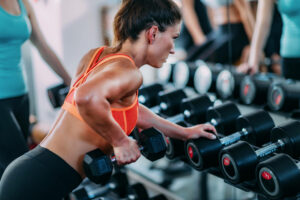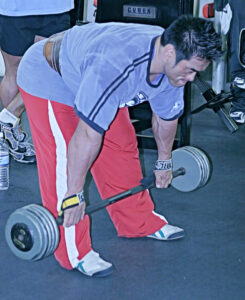
The Strength Sensei on Rows
The pros and cons of these popular exercises
In just about any article he wrote about upper back training, whether for sports performance or bodybuilding, Charles R. Poliquin would champion the cause of chin-ups and pull-ups. At seminars, after praising his go-to exercise, the question would inevitably come up, “What about rows?”
Before answering that question, consider that barbell rows were popular in the early days of the Iron Game among many strength athletes and bodybuilders. Among the fans of barbell rows are powerlifting great Ed Coan and 6x Mr. Olympia Dorian Yates. Coan, who deadlifted 901 pounds at 220 bodyweight, believed they were a valuable assistance exercise for the bench press and deadlift. Yates used them to build one of the best backs in bodybuilding history. What does the research say about this exercise?
In an ACE-sponsored study published in April 2018 (acefitness.org), 19 males between 18 and 25 years were recruited to determine how eight exercises affected the contraction of the middle trapezius, lower trapezius, latissimus dorsi, infraspinatus, and erector spinae. The researchers found that the bent-over row had the highest muscular activation in three muscle groups and the second-highest activation in two others. That said, the Strength Sensei was not a fan of barbell rows.
The Strength Sensei believed barbell rows expended too much neural drive from the glutes, hamstrings, and erector spinae to maintain a neutral spine during the exercise. Such effort minimized how much effort the trainee could use to recruit the lats. Also, consider that the type of barbell rows often performed by many Iron Game athletes were often cheat rows, using the legs to assist with the movement, thus further reducing the involvement of the lats.
 Barbell rows require considerable effort by many posterior-chain muscles to maintain the optimal position of the back during the exercise. (Miloš Šarčev photo)
Barbell rows require considerable effort by many posterior-chain muscles to maintain the optimal position of the back during the exercise. (Miloš Šarčev photo)
Instead of a barbell, the Strength Sensei preferred dumbbell rows with one arm so that the lower back is supported. One-arm rows also provided a greater range of motion for the scapulae retractors. He especially liked thick-bar rows to increase grip strength; the thick bars reduced how much weight could be lifted, but he believed the strength developed from using this type of bar transferred better to athletic movements. Regarding program design, a general guideline in the Strength Sensei’s workouts was to perform one set of dumbbell rows for every set of chin-ups.
Rows have been a popular exercise for getting bigger and stronger, but consider using dumbbells over barbells to better target the muscles you want to develop. (TSS)
